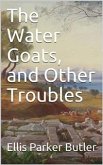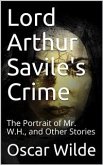Twenty-one lovely short stories that (incidentally) paint a vivid picture of life in Russia.
Contents
The schoolmistress -- A nervous breakdown -- Misery -- Champagne -- After the theatre -- A lady's story -- In exile -- The cattle dealers -- Sorrow -- On official duty -- The first-class passenge -- A tragic actor -- A transgression -- Small fry -- The requiem -- In the coach-house -- Panic fears -- The bet -- The head gardener's story -- The beauties -- The shoemaker and the devil
Contents
The schoolmistress -- A nervous breakdown -- Misery -- Champagne -- After the theatre -- A lady's story -- In exile -- The cattle dealers -- Sorrow -- On official duty -- The first-class passenge -- A tragic actor -- A transgression -- Small fry -- The requiem -- In the coach-house -- Panic fears -- The bet -- The head gardener's story -- The beauties -- The shoemaker and the devil









